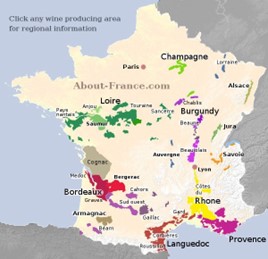A few issues back, Power Tasting gave advice on teaching new wine tasters about wine. We’d also like to advise on what to tell new wine tasters who are interested in going on a wine tasting trip if they ask for your input. A lot of them will want to go to Napa Valley, because that’s the American winemaking region best known to them.
Photo courtesy of Forbes.
- Focus on the experience and not just the wines. If it were just about wine, they could stay home and open bottles. Take in the scenery, the scented air, the architecture, the little side roads, even the restaurants. For the first-timers, the trip should be more than an introduction to wine; it should also be an entry into what Robert Mondavi called the good life.
- Take a winery tour. And maybe take it at the first place they visit. If in one stop they can see the vines, the winemaking facilities and taste the wines, they will get the full spectrum of wine: agriculture, industry and art. We, experienced tasters, get a bit blasé about winery tours; seen one and we’ve seen them all. If we give advice we should try to remember when we hadn’t seen one at all.
- Try a lot of different types of wine. One of the advantages of tasting in Napa Valley is the existence of wines made from so many varietals. So if in visiting just a few wineries – and sipping, not gulping – they can experience Chardonnay next to Sauvignon Blanc; Cabernet Sauvignon next to Merlot next to Zinfandel next to Pinot Noir. That’s an education!
- Show the server an interest in learning about wine. From a purely commercial perspective, it pays for the tasting room personnel to go out of their way to aid new tasters. Today’s young, innocent faces are tomorrow’s clientele. Beyond that, servers generally love wine and even if they’re not themselves educators, they probably know more about the subject than the new wine tasters in front of them. New visitors should urge their servers to share their knowledge.
- Talk to each other about what they’re smelling and tasting. (We’re assuming that they’re not tasting solo, which introduces a lot of other issues.) Just because they’re inexperienced doesn’t mean that new wine tasters don’t have good sense…and good senses. Finding ways to express their sensual reactions will help them to solidify their learning. And it’s fun to stick their noses into a glass and find the words for what they smell. Talking about it is even better. One’s smell of strawberries are no better than another’s pencil box , but it does lead to some interesting conversations.







